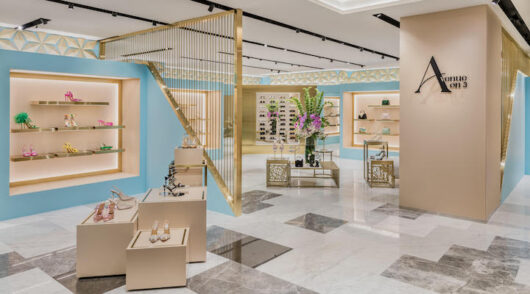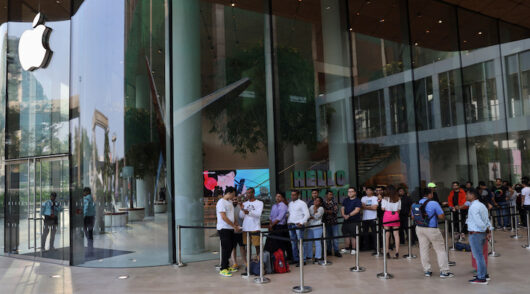In retail, change is constant and now the frequency of change is accelerating. There is always discussion on the pros and cons of change in retail, yet surprisingly retailers struggle on how to prepare for and implement change. A recent panel discussion resulted in an agreement on seven changes most significant to retail over the last 50 years. But first, the three most common drivers of retail change:
- Retailers themselves force change in an attempt to keep ahead of competitors, attract more customers and generate higher profits for the owners and shareholders.
- Advances in technology force change and retailers who don’t embrace the power of technology will surely be at a market disadvantage to their competitors.
- The customer is the ultimate change driver. More informed, technology savvy and with choice in shopping options customers are more demanding and if not happy they will vote with their feet.
So here is the list:
- The evolution from Traditional Trading to Organised Retail The transition from traditional to organised retail always brings with it the fear it will mean the end of the ‘Mom and Pop’ stores. Emotion and controversy can replace rational thinking however progress does not stop. The Lesson: if the incumbent small trader, (read ‘any retailer’), is opened minded, has operational agility and can act with speed they are well positioned to compete within the changing market.
- The arrival of The Shopping Mall The Shopping Mall as we know it today appeared in the US in the mid 1950’s. Customers embraced being protected from the sun, wind and rain on their shopping visit. The shopping mall quickly became the center for social behavior becoming number one place for meeting family and friends. A visit to the shopping mall is today a matter of lifestyle. The Lesson: To succeed, retailers need to understand customer motivations and not just product and price. For success retailers must engage, entertain and emotionally connect with their customers.
- The constant creation and arrival of New Retail Formats In the pursuit of leadership and success retailers are constantly creating new retail formats. From small market stall to large supermarket, from full service department store to self-serve mass merchandiser and possibly the most dramatic of all has been the change from ‘bricks and mortar’ to ‘online’ shopping. The Lesson: Whilst it is human nature to resist change, for longevity in retail a smart retailer must accept change is inevitable. Staying in touch with the customer is the critical step in being able to deliver the right retail environment.
- The invasion of Technology Before the 1970’s retailers were hands on and face to face merchants and knowing the business was a matter of being on the shop floor. Over time technology has become arguably the most significant of all changes providing retailers with every piece of data imaginable and not only is it in real time but, it is accessible sitting at the office desk. The Lesson: While ‘retail is detail’ and fast and accurate decisions are essential for success, there is very good reason for caution. The downside of technology can be desk bound managers suffering from ‘analysis paralysis’. An interesting question here is does this lead to the retailer disconnecting with the customer?
- The reliance on Promotion and Price There was a time when most retailers held two big sales each year. Customers would anxiously wait on these two events fully aware the prices would tumble and savings would be there for the taking and then happily return to everyday full price shopping. Retailers found price-off promotions a relatively easy way to accelerate sales, (but not necessarily profit). Over time retailers became more reliant on price-off promotions. The Lesson: If you use price-off promotions to drive the business you train your customer to only buy price-off items during event times. The result is a slump in full price sales which results negatively on the profit. For survival retailers need more than price off promotions.
- Available Trading Hours Over time amendments in government regulations and the change in customer work and lifestyle resulted in expanded trading hours. Gone is the limited 43 trading hours in a five-and-a-half day week and today customers shop across 73 hours in a seven day week. The Lesson: Today, more than at any other time, the customer demands to be able to shop when it suits them. Customers can shop online 24/7/365 and while this is an advantage for the online retailer, it is a tremendous challenge for the store retailer.
- The change in the Speed of Change The speed of change over the decades continues to accelerate. Speed is an influence in every aspect of retail today. Shorter delivery cycles, faster POS service time, use of technology to reduce manual time and new product reaching the shelves weekly, if not daily. The Lesson: If a retailer is too slow to function or too slow to change, they risk competitors getting ahead and yet equally if not careful, fast decisions can result in costly mistakes. Effective change management requires a change management discipline.
Conclusion: The measures to evaluate change are…
- Does the change have a positive impact on the final profit?
- Does the change generate an increase in market-share?
- Does the change result in an increase in customer loyalty?
Change management is a significant and unavoidable challenge for the modern day retailer. The biggest challenge for the retailer is to know how to manage change in the organisation’s structure and to determine the correct allocation of resources to deliver the ‘right change’ at the ‘right time’. *Darrell Wisbey has a 40 year career retailing and within the past 20 years was involved with some of the leading retailers in Asia. He is currently Chief Mentor and Retail Program Director with GREAT India B School in Hyderabad India.






